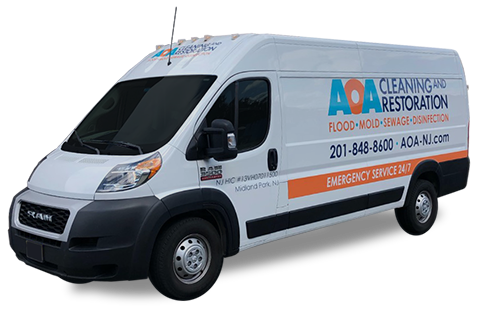Did you know that about 10% of homes in the United States face water damage each year? When you see a soggy ceiling, you might wonder: Do I need to replace ceiling drywall after a leak? It’s not just about looking at the surface. You need to find out why the leak happened and how bad it is to fix it right.
Getting help from experts like AOA Cleaning and Restoration can be a big help. They use special tools to check the damage. They can tell you if you just need to fix it or if you need to replace it. Knowing this can save you a lot of trouble.
But how do you know if you need to fix or replace your ceiling? Let’s look at some signs and how to stop leaks before they get worse.
Key Takeaways
- 10% of homes in the U.S. experience water damage annually.
- Common leak sources include leaky pipes and overflowing sinks.
- Signs of damage: sagging, discoloration, peeling paint, and mold.
- Professional tools like moisture meters help detect hidden damage.
- Quick action can save up to 50% on repair costs.
Identifying Water Damage in Ceiling Drywall
Water damage on ceilings can cause serious problems like sagging or collapse if not fixed. It can also lead to mold and mildew, which are harmful, even for those with breathing issues. About 30% of homes face water damage at some point, making quick action key.
Visual Signs of Water Damage
Spotting water damage starts with looking closely. Look for watermarks and discoloration, often in circles or pools. Ceilings might sag or bulge, showing issues with screws or bolts. If drywall feels wet or soft, it’s a sign of a bigger problem.
It’s vital to fix water damage fast. Ignoring it can lower your home’s value and scare off buyers. Mold can grow in just 24 hours, making health risks worse and needing drywall repair.
Using Tools for Detection
While eyes can spot obvious damage, tools help find hidden moisture. Moisture meters give exact readings, helping pinpoint where to inspect and replace drywall.
Experts use advanced tools for detailed checks. They assess damage and plan repairs. Regular checks on plumbing and gutters can stop more problems. A leak detector can catch issues early, saving money on repairs.
Do I need to replace ceiling drywall after a leak?
Whether you need to replace ceiling drywall after a leak depends on several factors. These include the level and source of water damage. Experts check if the wet drywall can be dried or if it needs to be replaced.
Usually, water leak ceiling repair is needed when the drywall is badly damaged or has been wet for a long time. Signs like soft spots mean the drywall has absorbed a lot of water. About 90% of the time, these spots mean the drywall needs to be replaced.
Mold growth is another big concern. It can start within 48 hours of water damage. If mold appears, it can be harmful, affecting people with breathing problems.
Fixing the leak right away is key. It stops more damage and prevents future problems.
Getting help from professionals is important. They can cut mold growth by up to 90% if they act fast. Also, not replacing water-damaged drywall can weaken the structure by 30% over time.
Visible signs like watermarks or shapes on the drywall mean you need an expert’s help. They can tell you how bad the damage is.
Leaks can also harm other materials like insulation and cabinets. Even structural parts like beams and joists might need to be replaced. Quick drying methods can help some materials, but wet drywall is usually too far gone to save.
Conclusion
Deciding to replace ceiling drywall after a leak depends on several key factors. It’s important to act quickly to find and fix the water damage source. Professional checks are essential, as 70% of homeowners miss water damage until it’s too late.
Water marks are a clear sign, with 60% needing drywall replacement. Ceiling texture changes, like sagging, also show the need for action in 40% of cases. Moisture meters help find moisture in 90% of cases, and experts can spot hidden damage in 50% of leaks.
Quick action after a leak can cut repair costs by 30% and stop mold growth. Mold can start in 24 to 48 hours, causing health issues and damage. So, fixing water damage quickly is not just a repair—it keeps your home safe and prevents future problems.
Regular checks and maintenance are vital to prevent leaks. Keeping your home well-ventilated and checking roofs and pipes can help keep your home in good shape.






